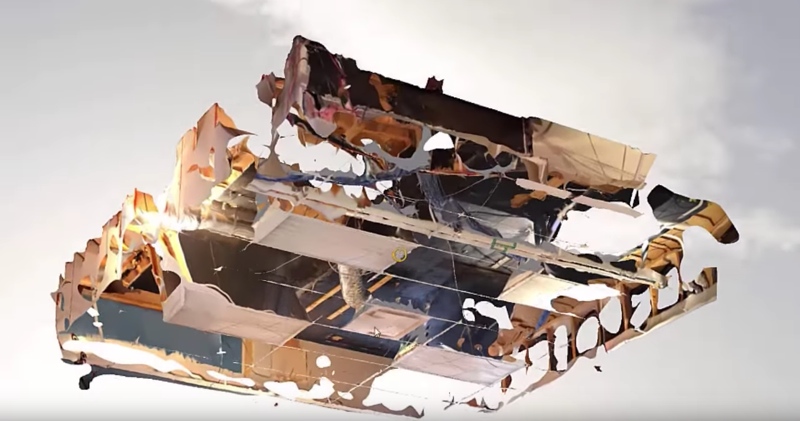By Stéphane Côté, Research director in the Applied Research group at Bentley Systems
The HoloLens is an amazing device. It is, by far, the best augmented reality device I have ever used. Last spring, we were lucky enough to get one to play with.
To find ways that the HoloLens could help improve infrastructure engineering, we conducted three little experiments related to construction planning, piping diagrams, and X-Ray vision for building maintenance. I’ve also included hints about a bigger one to be revealed soon.
Building construction planning – in a context
The first one was the simplest – an example of the typical “model on a table” demo.
Building design and construction planning can be a little abstract on a computer screen. The concept was to visualize the steps of the construction process within a real-world context. This would facilitate the planning of construction work, transportation of material, and traffic disruptions.
We displayed the building model inside a Bentley Context Capture mesh of a city, and provided a simple user interface to move through through the construction steps. Our schedule for producing the demo was extremely tight, so the result is a little rough, yet when wearing the Hololens it was quite convincing – well, at least for a first try…
Understanding Piping Diagrams
Our second experiment was related to piping and instrumentation diagrams (P&IDs). For those not familiar with the term, P&IDs are drawings that illustrate the logic of a pipe circuit. They are not only used for designing a plant, but also for maintaining it (“how can I drain this circuit to fix that pump?”), and as a tool for emergency situations (“what valves should I shut to stop this chemical spill?”).
One of the difficulties when using P&ID drawings is they do not represent the geometry of the plant. A short line in a drawing could be implemented as a 60 cm long pipe in a plant, or as a 300 m long one. Consequently, P&ID drawings cannot be used as is for augmented reality, because they cannot properly be aligned with reality.
One of the consequences is the difficulty of finding assets. Say you want to find the location of the physical pump that corresponds to a given pump symbol in a P&ID. You may have to search a little, first finding the portion of the plant to which the drawing corresponds, then reading equipment codes and comparing those to the drawing’s info, etc. Finding the 2 valves that you should close to isolate that pump from the circuit will also require some search. We thought we could improve this process.
So we worked on a HoloLens application that highlights the correspondence between P&ID elements and physical assets. This is shown in the video below: you want to find what physical pipe a P&ID line represents? You just tap it, and the corresponding 3D pipe is highlighted in the model.
X-Ray Vision for Building Maintenance
The most recent experiment that we did is about giving building maintenance workers some X-ray vision. The video demo speaks by itself:
Such technology could save building maintenance teams a lot of time, as they could quickly identify the location of the equipment, and the tools that will be required for the task, without moving any tile.
Is that all we did? Of course not… those 3 projects were just quick experiments. We did another, much more extended project during the summer, related with facility maintenance. It is about giving workers the necessary assistance to access the data that they need at the right time and the right place, enabling them to take better decisions. We will be showing a demo of it during the Year In Infrastructure event in London, Nov 1-3, and attendees will be given the possibility to try it…
We are already seeing demos of all sorts of experiments that innovation teams are doing all around the world with the HoloLens. This is just the beginning – in the future, I believe Everything will be Augmented Everywhere, by Everyone. We are not there yet, but devices like the HoloLens certainly take us one step (much) closer…






